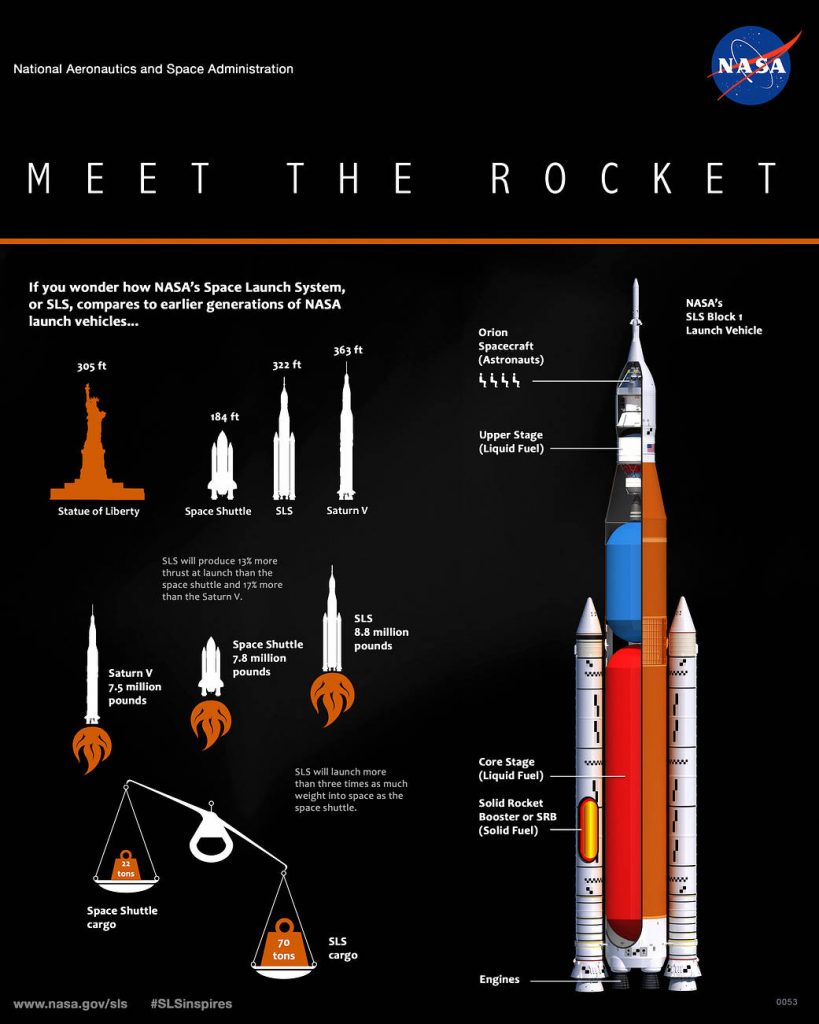The Space Launch System and Deep Space Exploration
Space enthusiasts are lucky to encounter a groundbreaking development in space travel once in their lifetime. In recent years, more research and development has been poured into the subject of deep space exploration. An upcoming milestone in the evolution of space exploration that is almost a decade in the making, NASA and its Space Launch System (SLS) aims to introduce a collaboration of old and new technologies to the future of space travel.
Deep space exploration is strongly involved with the aspirations to venture into the vast unknowns of outer space, using both manned and unmanned vehicles in an effort to understand more about our place in the Universe.
Government Funding
NASA’s Space Launch System was announced by Members of Congress and NASA Administrator Charles Bolden in September of 2011, estimating the System to replace the Space Race’s Space-Shuttle-era. The SLS had a projected cost of $18 billion from 2011 through 2017.
Updates to Past Technology
The SLS offers more “payload mass, volume capability and energy to speed missions through space than any current launch vehicle,” states the official NASA SLS Factsheet. The flexibility of SLS suggests possibilities of unmanned space travel to distant planets in our Solar System.
Features of the current SLS design include a height of 322 ft. (compared to the Statue of Liberty at 305ft.) and a weight of 8.8 million tons. SLS can launch up to 3 times as much weight in cargo compared to the Space Shuttle, which introduces immense versatility in the types of conductible space missions.
Blast-Off: Proposed SLS Missions
The first projected launch mission of SLS is Exploration Mission -1 (EM-1), an integrated test of the SLS rocket, Orion spacecraft, and Kennedy Space Center in Florida. EM-1 will test the capabilities of SLS by carrying an uncrewed Orion spacecraft into outer space, where Orion will orbit 280,000 miles from Earth and return in three weeks to Earth’s atmosphere at speeds and temperatures never seen before.
The current estimate for SLS’s first launch is December 2019, although many reviews have suggested that this deadline may be extended.
Testing SLS’s Capabilities
Hot-fire tests to test the engine capabilities of the SLS rocket and components have been continuously conducted by NASA, with the most recent test conducted on September 6th, 2018, focusing on the engine flight controller which equates to the “brain” of the engine. The hot-fire tests were conducted at Stennis Space Center in Mississippi, the facility which has been testing NASA space equipment and components since 1961. See below for a video recording provided by SciNews.

To Infinity and Beyond
Due to the versatile design of SLS, NASA hopes to integrate missions to farther locations as the SLS develops. The evolution of SLS is predicted to bring human space exploration to new heights, with plans such as permanent Moon infrastructure and travel to Mars in the works.
To follow the latest updates on SLS, check out its official Twitter feed.
-Allison Chiang

